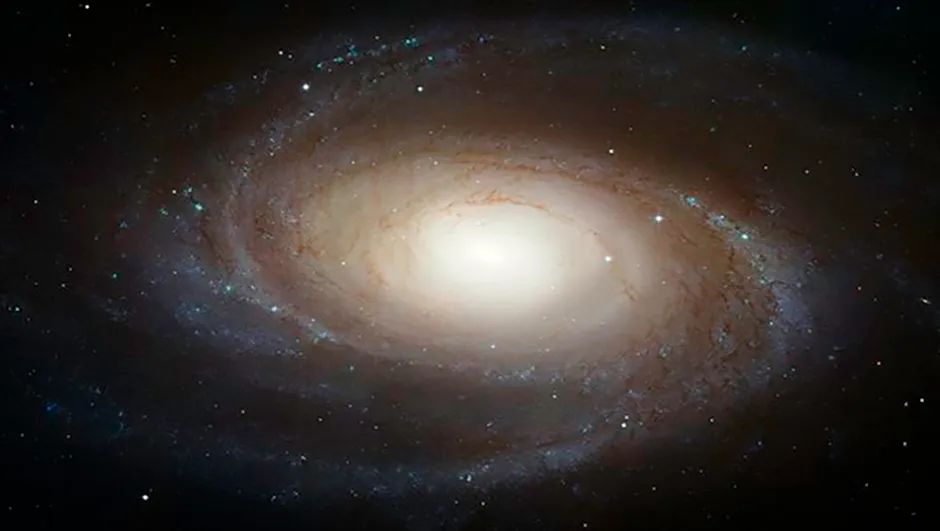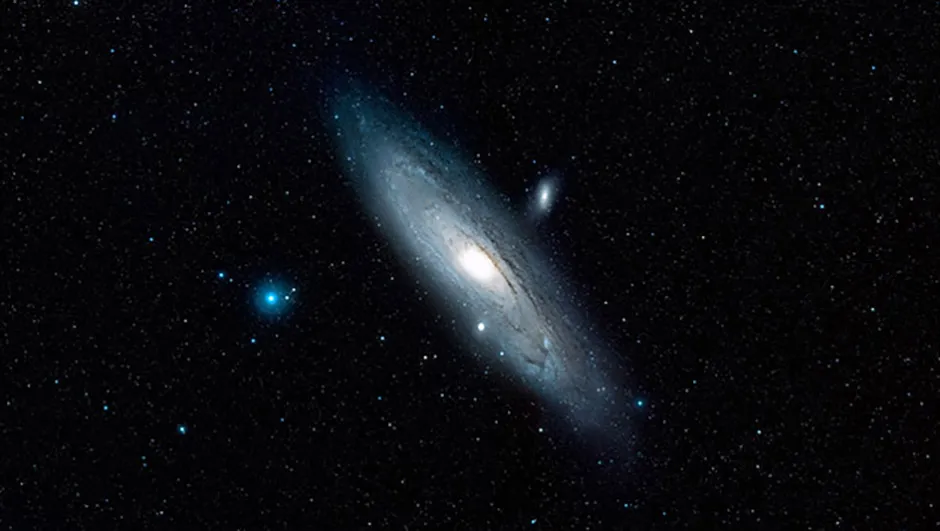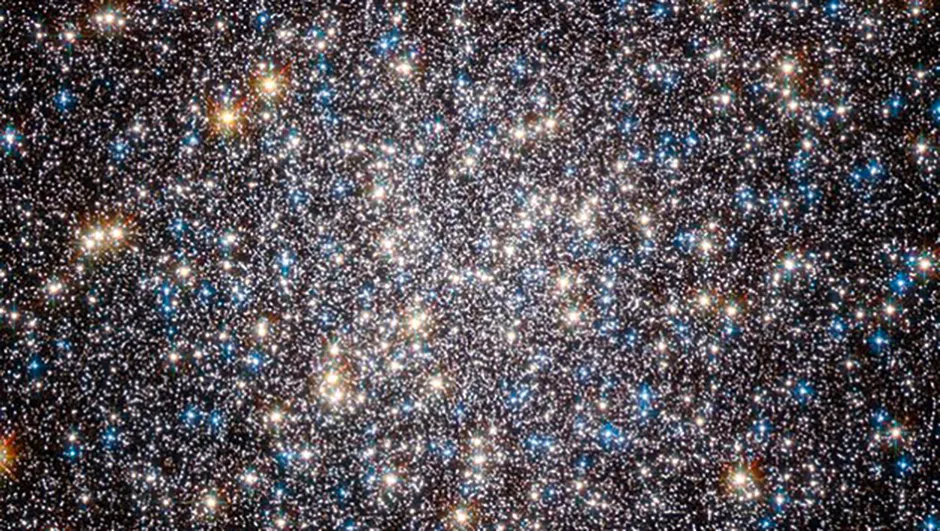Charles Messier's now famous catalogue of deep-sky objects is a treasure trove of beautiful objects to see in the night sky, but that wasn't his original intention.
On the evening of 13 April 1781, French astronomer Charles Messier added his final entry to what was to become the most extensive catalogue of nebulae and star clusters of its time.
Now a celebrated collection of celestial objects, the Messier Catalogue continues to provide astronomers, both professional and amateur, with an array of easy-to-locate objects to observe in the night sky.
Born in Badonviller, France on 26 June 1730, Charles Messier was first inspired by the night skies through the appearance of the spectacular Great Comet of 1744 (C/1743 X1).
It wasn’t long before Messier was swept up into the world of practical astronomy.
- View the complete Messier Catalogue
- 8 Messier objects to spot in the night sky
Under the supervision of his master Joseph Delisle, Messier found the astronomical instruments at his disposal well suited to the purpose of comet hunting, and became the first astronomer to devote his time to the pursuit of comets.
With only 50 comets having been documented before Messier, these celestial itinerants presented astronomers of the day not only with a fascinating challenge, but also the promise of fame and notoriety - a challenge Messier put to the forefront of his attention.
Messier’s successes began to flourish.
Dubbed the ‘comet ferret’ by King Louis XV, Messier found about 20 comets between 1758 and 1801, including Halley’s comet on its return in 1759.
Yet despite Messier’s comet successes, it is a numbered list of deep-sky objects for which he is mostly remembered.
The journey begins
On 12 September 1758, while comet hunting above the southern horn of Taurus, Messier noted the presence of the Crab Nebula, which he had originally mistaken for a comet.
Spurred by his frustration in wasting time on ‘false comets’, Messier penned the first entry into what was to eventually become a 110 item long list of nebulae, star clusters and other deep-sky objects.
It was not until Messier had catalogued his third object (Messier 3, a globular cluster in the constellation Canes Venatici), that the astronomer actually began a dedicated and systematic search for other nebulous objects.
Unlike many other astronomers and scientists of his time, Messier was not set on solely cataloguing his personal discoveries, but also included many discoveries by other astronomers from previous catalogues and contemporaries.
By January 1765, Messier had observed and compiled a list of 41 previously known and also newly discovered objects, for which he had determined positions.
After presenting his original catalogue of 45 objects to the French Academy in 1771, Messier no longer systematically searched the sky for nebulae and clusters.
He did however continue to document objects that either he or his contemporaries encountered during subsequent observations. This included the elliptical galaxy Messier 49: the first object to be discovered in the now famous Virgo cluster of galaxies.
Further discoveries followed. Messier published an additional 23 nebulae and star clusters in the French almanac Connaissance des Temps in 1780 as a supplement to his original catalogue, before turning his attention to the Solar System with detailed observations of the Moon and Saturn.
At this point Messier called upon the help of his close friend and colleague Pierre Méchain to help complete the list now so familiar with modern astronomers.
A talented astronomer and mathematician who may have found at least 20 of the objects in the Messier catalogue, Méchain was taken under Messier’s wing, assisting Messier in complex orbital calculations.
Méchain doesn't appear to have catalogued new nebulae and clusters, though he did communicate his discoveries to Messier who, in turn, checked their positions before adding them to his list.
Just a year after its second supplement, Messier’s catalogue had grown to an impressive 100 objects.
Pressured by a publication deadline, legend has it that the final three objects submitted in Messier’s list were never verified by Messier, who had not yet observed the final additions sent to him by Méchain.
A testament to the close partnership formed between the two.
Growing to the now familiar 110 objects completed after Messier’s death, the Messier catalogue has come to be accepted as a cornerstone of modern astronomy for both amateur and professional astronomers alike.
Why is Messier's catalogue so celebrated?
“I remember as a child being really excited to be able to pick out the Andromeda Nebula, M31 with the naked eye and knowing that this was one of the most distant things I would be able to see without the aid of a telescope,” says Dr Marek Kukula, Public Astronomer at the Royal Observatory Greenwich.
“(The Messier objects are) so big, so bright, so near. With a very basic telescope or a pair of binoculars you can really start to explore that richness, that diversity of different types of objects that the Universe contains.”
Indeed, it was not until long after Messier’s death in 1817 that the importance of the Messier catalogue was realised. As Messier had been armed with only a humble 4-inch refractor, the wonders and the significance of many of the objects had been obscured to him.
“He had no idea of the significance of them and now of course the study of galaxies is enormously important in our understanding of the large stale structure of the Universe, and the way it formed and evolved after the Big Bang,” says Kukula.
“In his catalogue you’ve got nebulae, you’ve got the births of stars, you’ve got the death of stars, you’ve got other galaxies.
All of these things which are still hugely important in modern astronomy”.
The Messier catalogue's popularity with amateur astronomers has made it one of the stalwart references for observing the cosmos, with many of its objects being among some of the most popular targets in the night sky.
“I do have a soft spot for M16 the Eagle Nebula, just because of the spectacular Hubble Space Telescope close-ups of it” says Kukula.
“But I guess if I had to pick a favourite it would be M87, which is the Virgo A radio Galaxy, because my research area was active galaxies and of course it’s such an amazing object.
"It has this beautiful radio jet coming out which you can see in the optical and there are beautiful Hubble images of it now that show the galaxy itself with all of its stars, but also this jet of plasma coming out from the centre.”
Messier’s legacy will no doubt live on long into the future.
The beauty of the Messier catalogue and the ease with which many of the objects can be located continues to bring great pleasure to amateur and professional astronomers alike.
It is a perfect starting point for newcomers to the hobby.
Be sure to look up at the next opportunity and who knows, you may even spot a Messier yourself.
Try it yourself
Below are five Messier objects that can be seen in clear, dark skies with a pair of binoculars. See if you can spot them yourself in the night sky.
M81 -Bodes galaxy

Type: Spiral galaxy
Lightyears from Earth: 11.8 million
Right ascension: 09h55m33s
Declination: 69°3’55’’
Magnitude: 6.9
One of the most distant objects visible to the naked eye, M81 is over 4 times as far away as M31, the Andromeda galaxy.
M45 -The Pleiades

Type: Open star cluster
Lightyears from Earth: 444
Right ascension: 3h47m24s
Declination: 24°07’00’’
Magnitude: 1.6
Just 100 million years old, these young hot stars glow a brilliant ice-blue.
M31 -The Andromeda Galaxy

Type: Spiral galaxy
Lightyears from Earth: 2.54 million
Right ascension: 00h42m44.3s
Declination: 41°16’9”
Magnitude: 3.4
The closest galaxy outside our Milky Way, the first modern documentation of Andromeda was in 1612.
M13 -The Hercules globular cluster

Type: Globular cluster
Lightyears from Earth: 220,000
Right ascension: 16h41m41s
Declination: 36°27’36”
Magnitude: 5.8
A swollen mass teeming with perhaps 100,000 stars spread across 135 or more lightyears.
M20 -The Trifid nebula

Type: Emission nebula
Lightyears from Earth: 5,200
Right ascension: 18h02m23s
Declination: -23°01’48”
Magnitude: +6.3
A magnificent object. Very large and bright with two bright stars involved.